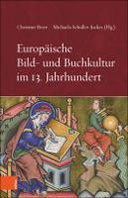Explore

European visual culture changed so fundamentally in the 13th century that, in retrospect, we perceive an epochal boundary – the stylistic change from Romanesque to Gothic, the transition from the High to the Late Middle Ages. Some of the foundations for this were laid in the previous century. Thus the developments initiated in the masons' lodges of northern France in the middle of the 12th century not only led to the great architectural achievements of the 13th century, but also to common standards in the sculpture of Western, Central and partly Southern Europe. Another important impulse came with the conquest of Constantinople in 1204. The half-familiar, half-exotic visual media of Byzantine art were mainly received in Central Europe and Italy, leading to the development of specific art forms that were distinct from Western painting. These achievements were complemented by literary production, which took on an unprecedented scale. In addition to the almost boundless quantities of religious writings and specialist literature, mainly written in Latin, the tradition of extensive profane poetry in national languages, which began at the end of the 12th century, intensified. The latter is evidenced by a growing readership outside spiritual institutions and the manufacturing structures that were formed to meet the new demand. This was inevitably accompanied by innovations in book illumination and the creation of new secular picture cycles.
Which of the aforementioned dynamics were decisive in each individual case and whether there were other important factors that contributed to this development was the subject of an international conference that took place in 2017 at the Art History Institute of Vienna University under the title "Image- and Book-Culture in 13th-Century Europe", the results of which are presented in this volume. The contributions approach various aspects of the developments from different angles. They offer a range of current research, including approaches from the history of ideas and media research, as well as findings on recipients, networks, the transfer of objects and technical innovations based on detailed analyses. The starting point is formed by images - paintings and sculptures, stationary as well as mobile, publically accessible as well as private.
This book is included in DOAB.
Why read this book? Have your say.
You must be logged in to comment.
Rights Information
Are you the author or publisher of this work? If so, you can claim it as yours by registering as an Unglue.it rights holder.Downloads
This work has been downloaded 108 times via unglue.it ebook links.
- 108 - pdf (CC BY) at OAPEN Library.
Keywords
- Art forms
- Ceramic arts, pottery, glass
- History Of Art / Art & Design Styles
- History of art: Byzantine & Medieval art c 500 CE to c 1400
- Mosaics: artworks
- Non-graphic art forms
- ÖFOS 2012, Art history
- ÖFOS 2012, Kunstgeschichte
- Painting & paintings
- sculpture
- The arts
- thema EDItEUR::6 Style qualifiers::6M Styles (M)::6MB Medieval style
- thema EDItEUR::A The Arts::AF The Arts: art forms::AFC Paintings and painting
- thema EDItEUR::A The Arts::AF The Arts: art forms::AFK Non-graphic and electronic art forms::AFKB Sculpture
- thema EDItEUR::A The Arts::AF The Arts: art forms::AFP Ceramics, mosaic and glass: artworks
- thema EDItEUR::A The Arts::AG The Arts: treatments and subjects::AGA History of art
Editions

